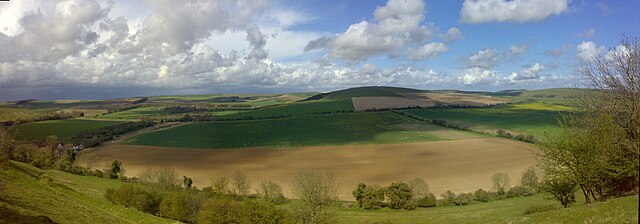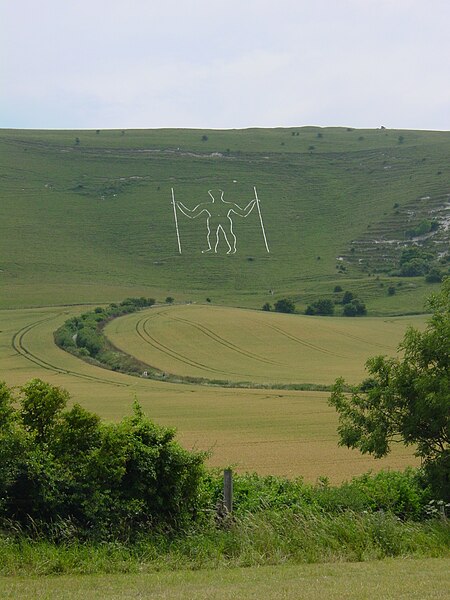The Devil's Jumps are a group of five large bell barrows situated on the South Downs 1.2 kilometres (0.75 mi) south-east of Treyford in the county of West Sussex in southern England. The Devil's Jumps site is listed as a Scheduled Ancient Monument and as a Local Nature Reserve. Most barrows along the South Downs have been damaged by agriculture and treasure hunters but the Devil's Jumps are considered to be the best preserved Bronze Age barrow group in Sussex. The barrows are laid out in a line running approximately south-east to north-west. The five barrows vary in diameter from 26 to 34 metres and stand up to 4.8 metres (16 ft) high. Two smaller barrows were situated close to the five main mounds. Traces remain of a sixth barrow. The Devil's Jumps have been dated to the Bronze Age and they are believed to be between three and four thousand years old. The Devil's Jumps were explored in the 19th century, when bones were found in two of the mounds, although some of the barrows contained no cremated remains at all. The main line of five barrows is aligned with sunset on Midsummer Day.

One of the bell barrows with a visible circular ditch
A panorama of the Devil's Jumps, viewed from the southwest and showing all five principal mounds.
The South Downs are a range of chalk hills in the south-eastern coastal counties of England that extends for about 260 sq mi (670 km2) across the south-eastern coastal counties of England from the Itchen valley of Hampshire in the west to Beachy Head, in the Eastbourne Downland Estate, East Sussex, in the east. The Downs are bounded on the northern side by a steep escarpment, from whose crest there are extensive views northwards across the Weald. The South Downs National Park forms a much larger area than the chalk range of the South Downs, and includes large parts of the Weald.
The Seven Sisters, near Eastbourne, viewed from Seaford Head
The dip slope of the South Downs, as seen from Angmering Park Estate near Arundel (panoramic view)
Plan of Cissbury fort showing shafts
The Long Man of Wilmington, inscribed into the scarp face of the South Downs in East Sussex






